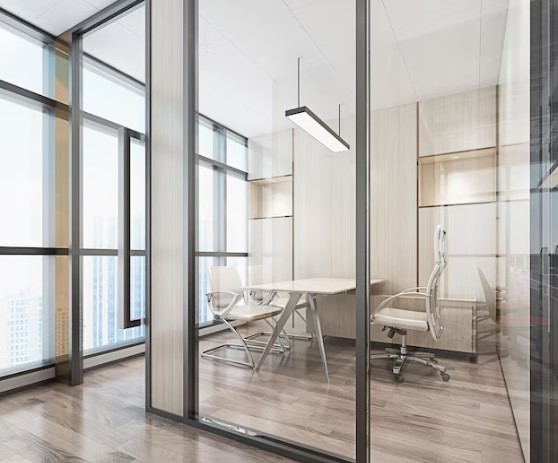Glass partition walls have become a popular choice in modern architectural design, combining the elements of form and function in a harmonious way. These versatile structures not only enhance the aesthetic appeal of a space but also offer practical benefits. From creating a sense of unity in architectural concepts to integrating functionality into aesthetic designs, glass partition walls have revolutionized the way we approach interior design. In this article, we will explore how the marriage of form and function can be achieved through the innovative use of glass partition walls.
Harmonizing Design Elements: Achieving Unity in Architectural Concepts with Glass Partitions
One of the key advantages of using glass partition walls is their ability to create a sense of unity in architectural concepts. These transparent structures effortlessly blend with the surrounding environment, allowing for a seamless flow between different spaces. Whether it’s an office, a retail store, or a residential property, glass partition walls provide a visually appealing way to divide areas without creating a sense of separation.
Glass partition walls can be customized to match any design style, from minimalist and contemporary to classic and traditional. They can be seamlessly integrated into existing architectural elements, such as brick walls or wooden beams, creating a cohesive and unified look. By using glass partition walls, architects and designers can achieve a balance between openness and privacy, allowing natural light to penetrate while maintaining the desired level of separation.
Practical Elegance: Integrating Functionality into Aesthetic Glass Partition Designs
In addition to their aesthetic appeal, glass partition walls offer a range of practical benefits. They allow for the efficient use of space, providing a flexible solution for dividing large areas into smaller ones. Glass partition walls can be easily installed and reconfigured, making them an ideal choice for dynamic environments that require adaptability.
Moreover, glass partition walls promote a sense of openness and transparency, facilitating communication and collaboration in various settings. In office spaces, for example, these structures create a visually open environment that encourages interaction among employees, leading to increased productivity and creativity. In retail settings, glass partition walls showcase products and create a sense of elegance and sophistication.
Glass partition walls also offer acoustic properties, reducing noise transmission between spaces. This is particularly important in environments where privacy and concentration are paramount, such as conference rooms or private offices. The use of soundproof glass and integrated technology further enhances the functionality of these partitions, ensuring a quiet and productive working or living environment.
Coordinated Spaces: How Glass Partition Walls Align with Overall Design Schemes
When designing a space, it is essential to consider the overall design scheme and how different elements work together. Glass partition walls provide a versatile canvas for designers to align with the overall aesthetic of a space. They can be customized with various finishes, patterns, and colors to match the desired design language.
For example, in a modern and minimalist interior, glass partition walls with sleek metal frames and clear glass panels can create a sense of openness and simplicity. On the other hand, in a more traditional setting, glass partition walls with wood frames and frosted or textured glass can add a touch of elegance and sophistication.
Glass partition walls can also be integrated with other design features, such as lighting systems or decorative elements, to enhance the overall visual impact of a space. By considering the existing design scheme and incorporating glass partition walls strategically, designers can create a harmonious and coordinated environment.
Design Language: Communicating Purpose and Style through Glass Partition Wall Installations
Glass partition walls not only serve a functional purpose but also communicate a specific design language. The choice of glass type, frame material, and installation method can convey a particular style or aesthetic. For example, using frameless glass partition walls with minimalistic hardware can create a contemporary and sleek look, while using framed glass partitions with ornate details can evoke a more traditional and luxurious feel.
Additionally, glass partition walls can be used to reinforce branding and identity. In commercial spaces, such as offices or retail stores, incorporating company logos or custom graphics onto the glass surfaces can create a unique and memorable brand experience. This seamless integration of branding elements not only enhances the overall design but also communicates the purpose and values of the space.
Glass partition walls also provide an opportunity for creative expression. By using various glass treatments, such as etching, sandblasting, or digitally printed designs, designers can add a layer of artistic expression to the space. These customized glass partition walls become more than just functional dividers; they become works of art that elevate the overall design aesthetic.
In conclusion, the marriage of form and function is beautifully realized through the innovative use of glass partition walls. These versatile structures harmonize design elements, integrate functionality into aesthetic designs, align with overall design schemes, and communicate purpose and style. Whether it’s in office spaces, retail stores, or residential properties, glass partition walls have become an essential tool for architects and designers seeking to create visually appealing, practical, and cohesive environments. By embracing the potential of glass partition walls, we can truly transform spaces into works of art that inspire and delight.
